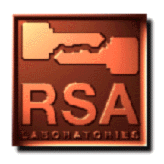

Certificates are digital documents attesting to the binding of a public key to an individual or other entity. They allow verification of the claim that a given public key does in fact belong to a given individual. Certificates help prevent someone from using a phony key to impersonate someone else.
In their simplest form, certificates contain a public key and a name. As commonly used, a certificate also contains an expiration date, the name of the certifying authority that issued the certificate, a serial number, and perhaps other information. Most importantly, it contains the digital signature of the certificate issuer. The most widely accepted format for certificates is defined by the ITU-T X.509 international standard (see Question 165); thus, certificates can be read or written by any application complying with X.509. A detailed discussion of certificate formats can be found in [Ken93].